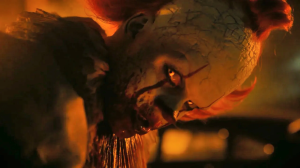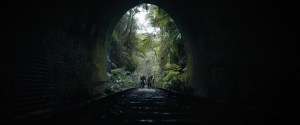Guillermo del Toro released Frankenstein 18 years after he began talking about making the film. According to Del Toro, when he was developing his idea, he said he wanted to make a “tragic” version of the story. He was clear that he was a massive fan of Mary Shelley’s novel, which the movies over the years were based on. He also admitted that the best parts of Shelley’s story had never been filmed. Del Toro said he wanted to take what the 1931 Frankenstein and its sequel, Bride of Frankenstein, did, and create a movie that was more than just another classical tale that people had seen before.
Videos by ComicBook.com
Del Toro achieved this goal by adapting Mary Shelley’s story and creating a faithful version that still allowed him to make a couple of significant changes to the source material. The good news is that Del Toro’s changes actually made the story even better.
Guillermo Del Toro Changed Dr. Frankenstein’s Love Life

The first significant change in Frankenstein came with the introduction of the character, Lady Elizabeth. As anyone who has read the novel or watched the 1930s Universal Horror movies knows, Elizabeth was Dr. Frankenstein’s fiancée in the book, and eventually his wife in the films. In the novel, the Creature wanted revenge for Frankenstein abandoning him and then refusing to create a mate for him so he wouldn’t be alone. He went to Frankenstein’s wedding and killed Elizabeth so his creator would be alone too.
In the Universal movies, the Creature didn’t kill Elizabeth. In fact, the story about wanting a mate didn’t come until the sequel, Bride of Frankenstein. At the end of that film, a mate was made. However, when she rejected the Creature, he allowed Frankenstein and Elizabeth to leave and live together before bringing the castle down on the Bride, the Creature, and the nihilistic Dr. Pretorius.
Guillermo del Toro took the idea from the sequel and improved on it in his movie by having Elizabeth and Frankenstein not romantically involved. Instead, Elizabeth (Mia Goth) is Frankenstein’s brother William’s (Felix Kammerer) fiancée. Victor had a strong attraction to her, but she was in love with his brother and actively despised the kind of man Victor was. Instead of going to kill Elizabeth, the Creature went to find Victor at his brother’s wedding to demand that he create a mate for him. Victor refuses and tries to kill the Creature, but accidentally shoots and kills Elizabeth instead.
This change was significant for several reasons. First, having Victor experience unrequited attraction for Elizabeth, only to watch her plan to wed his brother, was tragic. It showed that, like the Creature, Victor was doomed to be alone. He lost his beloved mother as a child, and his father always despised him. Now, he watched his brother find happiness, where he never could. When Victor not only killed his brother’s fiancée, but then watched as his brother also died, Victor ended up as alone as the Creature, connecting them more than ever.
The Frankenstein Ending Was Changed for the Better

Guillermo del Toro also changed the ending of his movie from the one used in both Mary Shelley’s Frankenstein and the Universal Horror movies. In Shelley’s novel, Victor tells his story to the crew of a ship trapped in ice. The Creature finds Victor after he has succombed to his wounds after telling his story, and has died. In the movies, the ship does not exist, and Victor never dies, with the Creature allowing him to live at the end of Bride of Frankenstein.
Del Toro returns the ship to the story and uses it in a way that Mary Shelley did not. Instead of Dr. Frankenstein telling the whole story to the ship’s captain, he only tells the first part of the story, ending when he tried to kill his creation before moving on with his life. In the new movie, the Creature makes it back onto the ship while Victor is still alive and offers to tell the rest of the story himself. This is where the film shows the Creature befending the old man and finally approaching Victor at Elizabeth’s wedding, where the doctor accidentally kills her.
The Creature wanted to kill his creator for both abandoning him and for killing Elizabeth, the only human other than the old man who cared for him. The scene from the Universal movie in which the Creature accidentally kills the little girl was also absent here. The Creature only killed people who attacked him in this new movie.
The ending had the Creature find Victor on the ship while his creator was still alive. This allowed closure that the novel didn’t, since Victor finally showed the Creature compassion, apologizing for abandoning him, and asking for forgiveness. The Creature gives it, and Victor dies, allowing Guillermo del Toro’s movie to end in a way that makes it better than any version of the tale that came before. The new Frankenstein ensures that the Creature is shown as the sympathetic victim, and Victor as the tragic villain, as it was always meant to be.
What do you think? Leave a comment below and join the conversation now in the ComicBook Forum!









